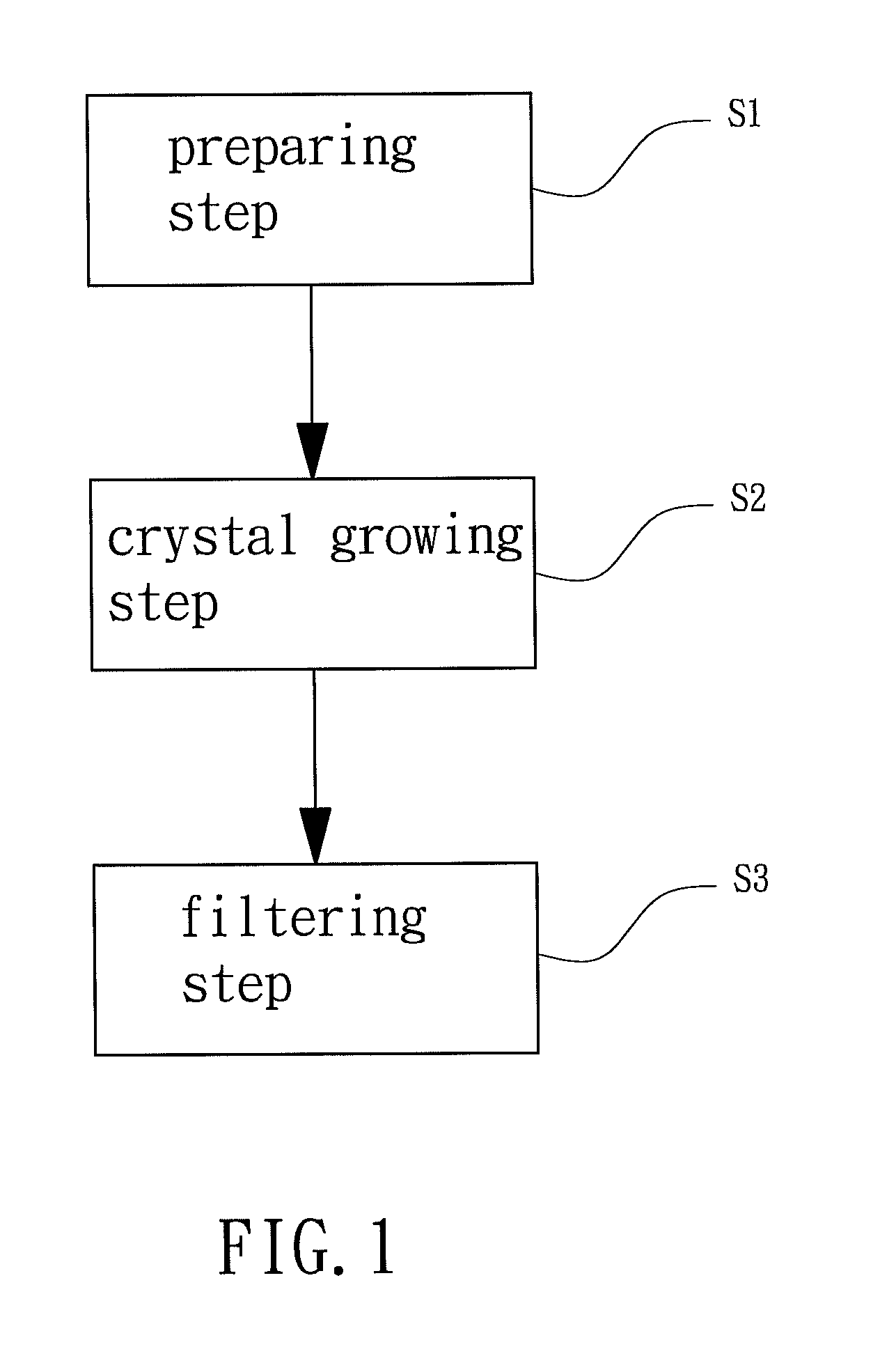Methods for preparing a coating solution for producing a transparent conductive film
- Summary
- Abstract
- Description
- Claims
- Application Information
AI Technical Summary
Benefits of technology
Problems solved by technology
Method used
Image
Examples
example 1
[0034]In example 1, zinc acetate was added into 2-propanol to form the first solution containing 0.75M zinc acetate, and aluminum nitrate was added into 2-propanol to form the second solution containing 1 wt % of aluminum nitrate. The first and second solutions were evenly mixed, and MEA was added as a stabilizer to form the coating solution precursor. The final concentration of MEA in the coating solution precursor was 0.75M. Next, the coating solution was heated and stirred for 4 hours at 75° C. The zinc acetate was completely dissolved and reacted with aluminum nitrate to generate a sol. The coating solution precursor was placed steadily for 3 days in an environment of 18-21° C. to undergo crystal growth and to form the raw coating solution. Finally, the impurities in the raw coating solution and external impurities settled at the bottom of the raw coating solution were removed, and a 0.5 μm mesh was used to filter crystalline grains with diameters larger than 0.5 μm in the raw c...
example 2
[0035]Example 2 was substantially the same as example 1 except that two stabilizers, such as MEA and DEA, or MEA and TEA, or DEA and TEA, were added before mixing of the first and second solutions. In this example, MEA and DEA were used as the stabilizers. The final concentration of MEA and DEA in the coating solution precursor was 0.75M. Subsequent procedures of example 2 were the same as those as example 1, obtaining a coating solution for producing a transparent conductive film (see A2 in Table 1).
[0036]With reference to FIG. 3, the coating solutions obtained in examples 1 and 2 were used to produce transparent conductive films. In an example of dip-coating, substrates were repeatedly submerged into and pulled out of the two coating solutions (A1 and A2) at a speed of 360 mm / min. The substrates coated with the coating solutions (A1 and A2) were sintered at 500° C. for 2 hours. Then, the substrates were annealed at 500° C. for 2 hours in an environment containing 8% of hydrogen an...
example 3
[0038]In example 3, zinc acetate was added into 2-propanol to form the first solution containing 1M of zinc acetate, and gallium nitrate was added into 2-propanol to form the second solution containing 4 wt % of gallium nitrate. The first and second solutions were evenly mixed, and MEA and DEA were added as stabilizers to form the coating solution precursor. The final concentration of MEA and DEA in the coating solution precursor was 1M. Next, the coating solution was heated and stirred for 4 hours at 75° C. The zinc acetate was completely dissolved and reacted with gallium nitrate to generate a sol. The coating solution precursor was placed steadily for 30 days in an environment of 18-21° C. to undergo crystal growth and to form the raw coating solution. Finally, the impurities in the raw coating solution and external impurities settled at the bottom of the raw coating solution were removed, and a 0.5 μm mesh was used to filter crystalline grains with diameters larger than 0.5 μm i...
PUM
 Login to View More
Login to View More Abstract
Description
Claims
Application Information
 Login to View More
Login to View More - R&D
- Intellectual Property
- Life Sciences
- Materials
- Tech Scout
- Unparalleled Data Quality
- Higher Quality Content
- 60% Fewer Hallucinations
Browse by: Latest US Patents, China's latest patents, Technical Efficacy Thesaurus, Application Domain, Technology Topic, Popular Technical Reports.
© 2025 PatSnap. All rights reserved.Legal|Privacy policy|Modern Slavery Act Transparency Statement|Sitemap|About US| Contact US: help@patsnap.com



